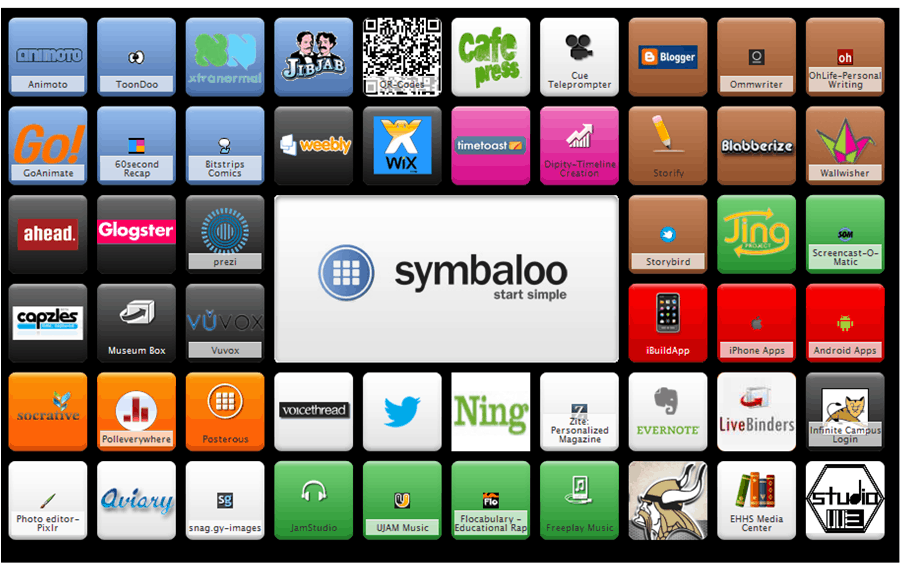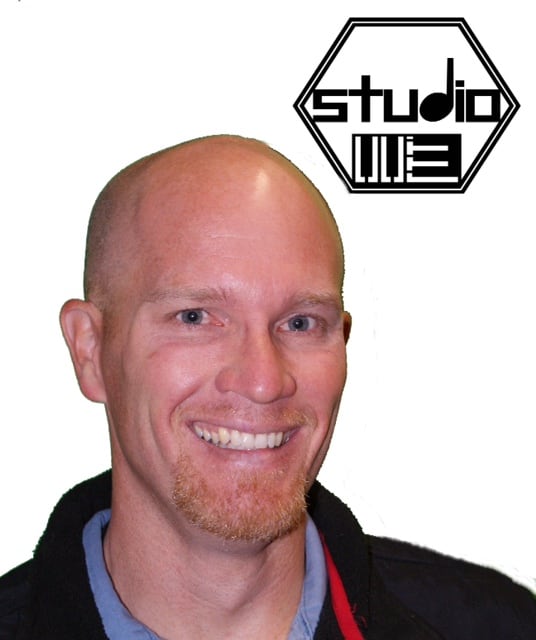Share Student Voices & Gather Audiences With 10+ Tech Tools

 Let’s begin here. Think of your three favorite, most inspirational speeches of all time. If you need a little help, quickly scan over this “Top 100 List” from Americanrhetoric.com. I’ll even give it a shot, too. Hmmm. Let me see. I’ll go with Martin Luther King, Jr.’s “I Have a Dream,” Lou Gehrig’s “Farewell to Baseball Address,” and Ronald Reagan’s “Space Shuttle Disaster Address.” Besides being highly emotionally charged and exemplars of rhetorical strategies, these three famous speeches share one often overlooked characteristic: People were listening.
Let’s begin here. Think of your three favorite, most inspirational speeches of all time. If you need a little help, quickly scan over this “Top 100 List” from Americanrhetoric.com. I’ll even give it a shot, too. Hmmm. Let me see. I’ll go with Martin Luther King, Jr.’s “I Have a Dream,” Lou Gehrig’s “Farewell to Baseball Address,” and Ronald Reagan’s “Space Shuttle Disaster Address.” Besides being highly emotionally charged and exemplars of rhetorical strategies, these three famous speeches share one often overlooked characteristic: People were listening.
Follow me just a bit further as we imagine Martin Luther King, Jr. delivering his beautifully written speech to a crowd of zero. Yeah, just a remarkably talented and courageous leader speaking his mind and voicing the collective conscience of our nation with not a soul standing on that hot, August day to witness. No minds altered. No hearts changed. No direction taken.
Or how about Lou Gehrig honoring those he was blessed to share time with and those who modeled selflessness in order to foster the growth of such an amazingly humble and accepting human? Perhaps those unforgettable echoes from the man dubbed “The Iron Horse” would not have been so memorable had no one been present that day in Yankee Stadium. No hearts to sense the sincerity of Gehrig’s words; only empty seats in a cavernous baseball cathedral.
And for sure a grieving nation would not have been consoled by such a charismatic and unwavering leader if all televisions had been turned off that tragic day the Space Shuttle Challenger lost its seven courageous adventurers. Instead, a nation was comforted in mourning, reassured of its purpose, and reminded of its brotherhood. All of this because President Reagan’s voice was heard. Someone was listening.
This is precisely the pivotal point my American Literature students and I arrived at following a thorough, multi-week study of rhetorical strategies and famous speeches. The audience is powerful, we concluded.
Based on this very premise, students in Studio 113 decided to think out loud and hope someone would listen. In essence, they gathered an audience with tech tools.
First Thing’s First: Writing the Essay
After successful classroom discussions, interactive and public Voicethreads, engaging YouTube videos of movie speeches, and collaborative learning structures, students were asked to write a speech that nonviolently protests a law they deem “un-American.” Students were prompted to exemplify rhetorical strategies and cite a minimum of two sources while adhering to the MLA format style.
For days, students took full advantage of a classroom environment that was conducive to producing heartfelt, genuine prose. While seeking to create authentic writing, students held firmly to the MLA guidelines with the use of “The Owl at Purdue” and easybib.com. Although the students’ essays are far from perfect, the process served as an exceptional learning experience.
Seeking Feedback: Using Technology to Share Students’ Voices
Once the essays were written, students used my shared Symbaloo webmix, “Creative Gallery,” to locate an appropriate technology tool to showcase their essays. Although the majority chose Blogger, students also used Wix, Weebly, Storybird, Google Docs, Windows Movie Maker Live and YouTube to share their viewpoints. Furthermore, students were encouraged to suggest any mode of sharing their essays, whether it be an unknown app, website, or some overlooked traditional method. Take a look at my “Creative Gallery” webmix below.
As students began posting their essays digitally, they were reminded to determine how they would solicit feedback. We discussed the websites that automatically allow readers to submit feedback, such as Blogger. However, a contingency plan was needed for those sites that did not offer a comment area. Enter Google Drive.
For those students who needed an easy way to solicit comments, I modeled how to set up a Google form/survey. Once this was completed, I showed them how to capture the link of the live form and paste it in an obvious place just below their essays on whatever technology site they chose. Once they viewed their feedback spreadsheet (generated by Google forms) and comprehended its power and simplicity, they were amazed.
Getting the Word Out: Leveraging Technology to Share Students’ Work
Although over half of my American Literature students are completing their projects this week, we have already implemented a plan to advertise our students’ essays. One thing was for sure: our mode of sharing needed to be simple. We needed a one-stop-shop, a hub, to showcase all of our students’ methods for publishing their essays. We chose Symbaloo.
By repurposing it with our students’ pictures and hyperlinks, Symbaloo serves as the starting point for visitors wanting to take a trip through our students’ diverse essays and occasionally controversial topics.
The process for creating our personalized Symbaloo webmix was simple. I furnished a team of three in-class, student volunteers with class rosters and a Sony Cybershot camera. While students continued to work on their projects in the computer lab, the photographers systematically took nearly all pictures within a class period of fifty minutes.
Once this was completed, I instructed students to use an embedded Google Form on my webpage to submit the Internet addresses where their essays could be found. Obviously, they were encouraged to double-check the link before submitting.
All I have to do is periodically check my Google Drive for any new submissions and copy the students’ links and pictures to my Symbaloo webmix. The process takes hardly no time at all. After all students and links are posted on the webmix, I will print out a picture of the entire Symbaloo webmix, assign a QR code to it, and have our school’s Graphic Arts classes print a banner containing both the picture and code. This 4’x6’ banner will be displayed in a high-traffic area at our school. Hopefully, this will generate some interest within the school and help us get the word out to others. Please take a look below at our hub for showcasing our students’ essays.
Of course, social media giants like Twitter and Facebook will play a crucial role as we begin to really push our products this week. But with the accessibility of all essays in one location, an explosive sharing of our students’ essays is just a “retweet” or “like” away.
One thing is for sure, an audience is a powerful, crucial element in a naturally symbiotic relationship between speaker and listener. Together they share dreams, give thanks, and comfort each other in challenging times. Are these times among us now? My students think so, and they have spoken.
Surely someone will listen.








0 Comments
Leave a Comment
Your email address will not be published. All fields are required.